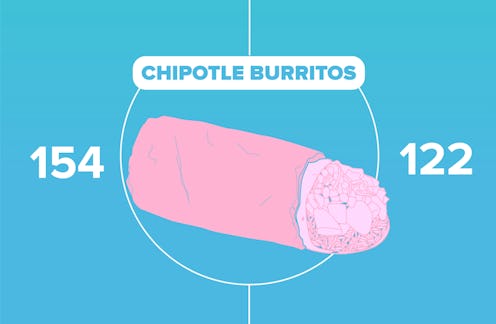Life
This Infographic Gets Hella Real About The Pay Gap

You’ve probably already heard the statistic that, in the U.S., a woman makes 79 cents to a man’s dollar. But it can be difficult to conceptualize what that discrepancy means in concrete terms. Lucky for you, Bustle has put together an infographic that illustrates the wage gap in a deeply personal way: Burritos. The image shows just how much Chipotle women lose to unequal pay, and, friends, brace yourselves. It’s a lot.
On average, a woman in the U.S. earns $790 for every $1000 that a white man does. With that money, the man is able to buy 32 more Chipotle burritos than the woman. If burrito inequality doesn’t tap into your outrage, the infographic offers other examples of how the wage gap translates into purchasing power. For example, with his $1000, a man is able to Netflix and chill for 26 more months than a woman with her $790. He can also buy 120 more condoms, purchase 20 more Harry Potter e-books, ride the subway 77 more times, and take almost a full college credit hour more than she can. (Because of the wage gap, women also have a significantly more difficult time paying off their student loans than men do.)
Although the “79 cents to the dollar” statistic is a useful general measure of pay inequality, it’s important to remember that the wage gap is in fact much more complex than this number would suggest. Seventy-nine cents may be the average among women in general, but this number goes down significantly if we measure the pay gap between white men and women of color; black women, for instance, earn an average of 63 cents for every white man’s dollar, while Latina and Hispanic women earn only 54 cents. Gender plays a major role in pay inequality, but race, disability, sexual orientation, and even body weight are also significant factors that affect both women and men’s pay status and contribute to wage inequality. Whether you’re measuring the wage gap in dollars and cents, burritos, or Netflix subscriptions, it all adds up to a whole lot of "Not OK."
Image: Dawn Foster/Bustle